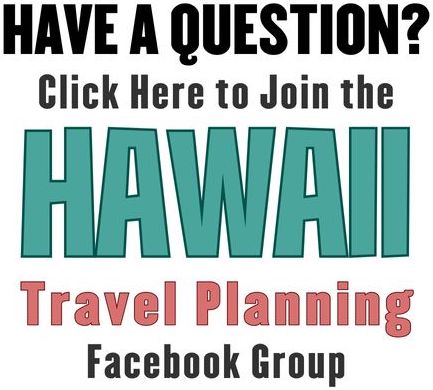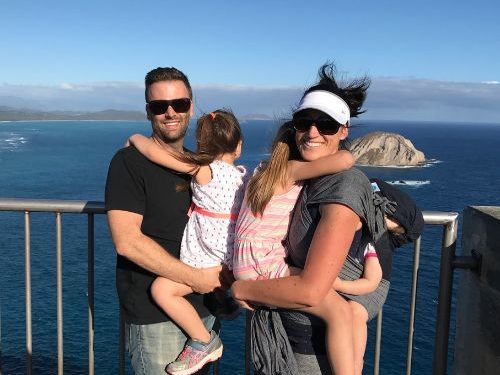“We believe this process of pre-testing does allow us to bring travelers back to Hawaii in a way that maintains a priority on the health and safety of our community.”
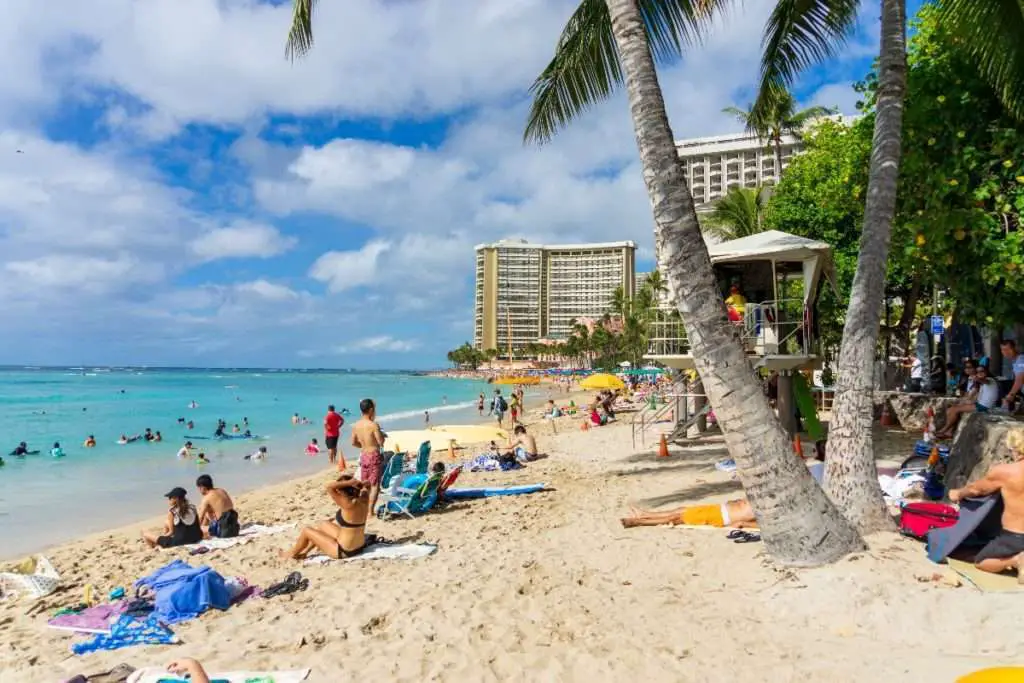
Photo by Sung Shin on Unsplash
However, Hawaii’s Governor David Ige, envisions the new quarantine rule starting August 1st to stay in place until a vaccine is made available or treatments have aided to the decreased risk of the virus.
And just to be clear, the test is optional. If you decline to be tested, you will be required to quarantine for your stay up to 14-days at the time of arrival.
How and Where to Get Tested
Depending on where you’re located, a testing location could be conveniently located. Hawaii is in conversations with CVS, Walgreens, and Kaiser with helping administer tests with a quick turnaround of 3-days. The test of choice will be PCR.
A 3-day turnaround for testing is pretty quick, but between these large testing locations, they’ll be able to keep up with the demand. That’s the reason why there will be no testing available at the airports at arrival.
Hawaii’s COVID-19 tests are primarily for residents. So, the influx of arriving passengers would put a lot of pressure and strain on Hawaii’s testing capacity. Also, having proof of testing negative for coronavirus at the time of travel will help to speed up the travel process rather than having to wait around at the airport for a test when you arrive.
The state will be responsible for ensuring proper testing papers, not the airlines.
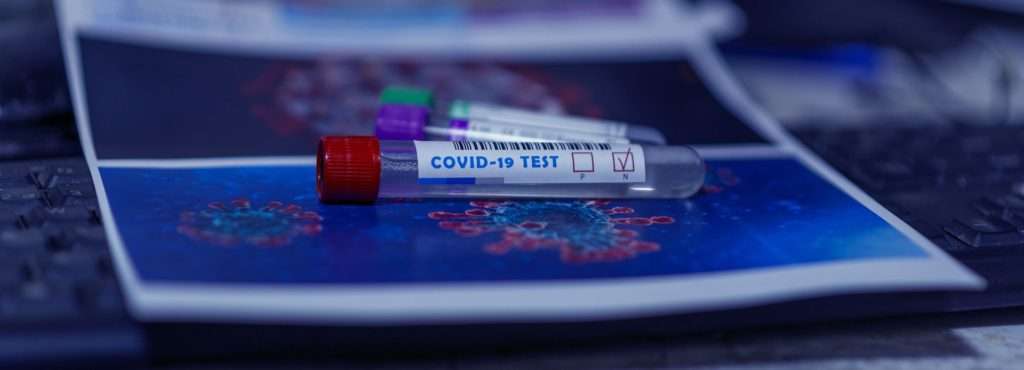
Image by fernando zhiminaicela from Pixabay
Details and Questions Are Still Developing
- Testing costs?
- What if I don’t have access to CVS, Walgreens, Kaiser, etc?
- What happens if I test positive?
- What questions do you have? Let us know in the comments below.
What to Expect at the Airports
I’m not entirely sure what airports and airplanes will look like on August 1st. I do have some facts and opinions. I don’t think a lot of people will be traveling right away. Hawaiian Airlines has also stated that it won’t be flying with a full load of passengers.
Here is a video Hawaiian Airlines released on June 25th.
View this post on Instagram
With fewer crowds expected at the airports and with social distancing, I would expect wait times to be about the same as if it were a full day. That’s just my guess. What do you think?
A questionnaire form will also be required to present to your airline when checking in. Airports will be doing temperature scans. A temperature of 101.4 degrees Fahrenheit, and you’ll need more screening and likely a COVID-19 test on the sport. Masks are required at the airport, onboard the aircraft, and during the entire flight.
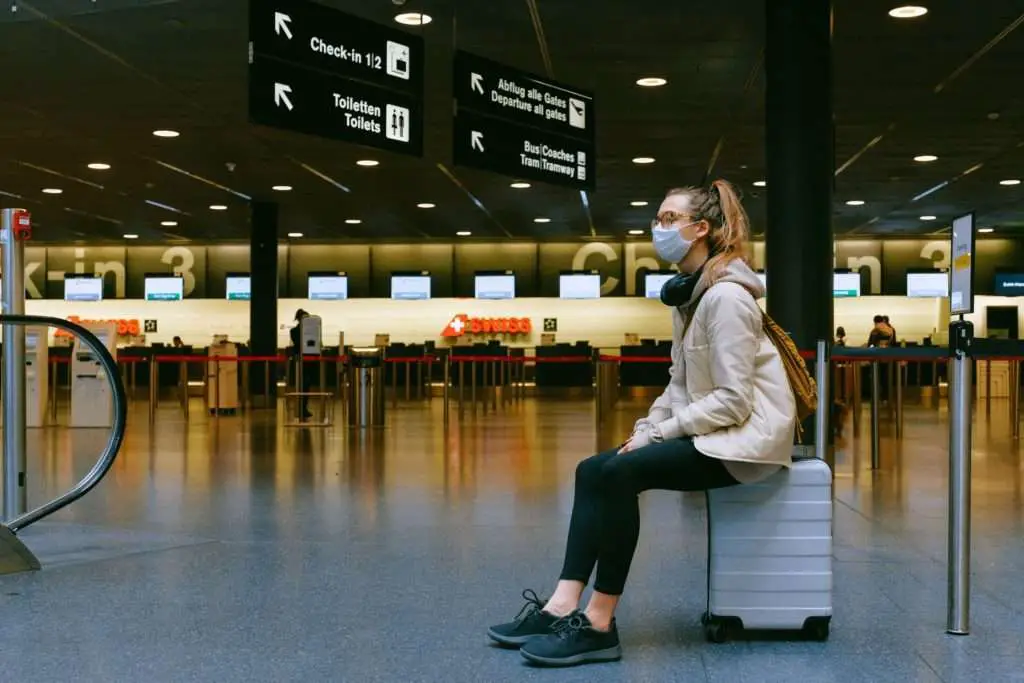
Photo by Anna Shvets from Pexels
What to Expect in Hawaii
Once you’ve jumped through all those hoops, welcome to Hawaii! In Hawaii, wearing masks and socially distancing will still be the requirement. You can expect fewer crowds, good deals, and beautiful weather.
The aloha spirit is still alive and well.
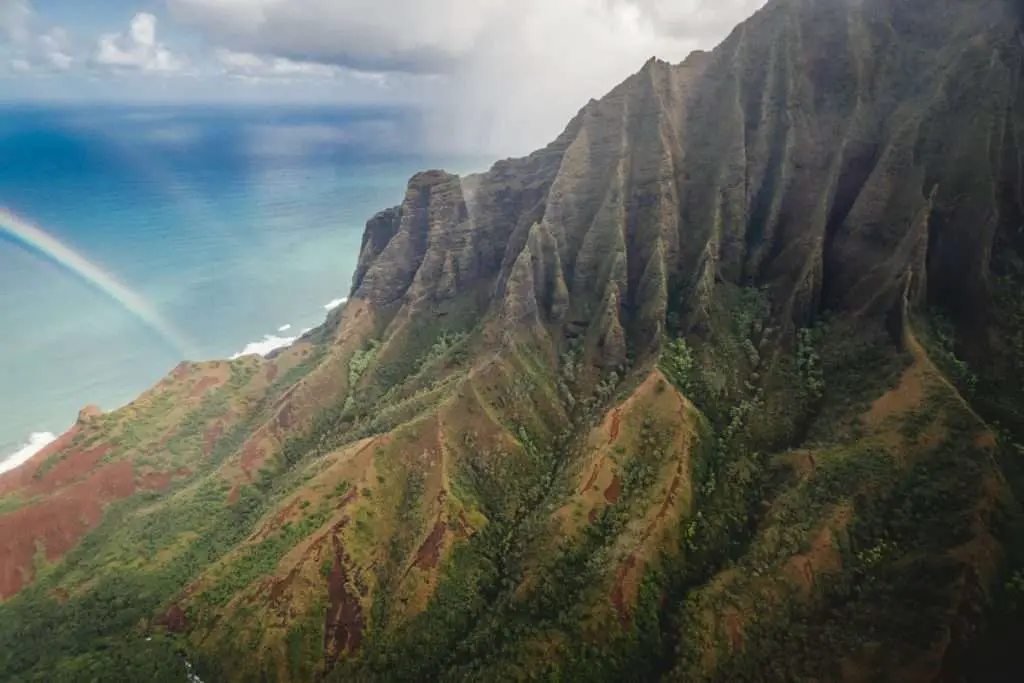
Photo by Errin Casano from Pexels
Tips for Smooth Travel
- Get tested for COVID-19 3-days before travel
- Isolate after testing until you travel
- Fill our online health form
- Budget for testing, a couple of hundred dollars?
- Plan extra time since this is all new.
- Pack light, let’s face it, you don’t need a lot in Hawaii, and the less you pack the less you have to think about
- Book early
We will keep you updated as details develop.
Subscribe to our podcast to stay up to date and follow us on Instagram
So, that’s all we know right now. Now that Hawaii’s reopening date has been set, what about you? What questions do you have? Are you planning on traveling to Hawaii in 2020?
In This Episode
Show Some Aloha
- Leave an honest review on iTunes. Your ratings and reviews really help other people who love Hawaii find this podcast.
- Subscribe on iTunes.
Unknown Speaker 0:00
And here we meet again beneath the mighty more banyan tree beside the sea, the great autorama of Waikiki Beach before all diamond had at one end, surfboards and outrigger canoes, catching the waves out there. many colors along the shore up
Unknown Speaker 0:16
riding shootable
Bryan Murphy 0:19
Edward speaking for all the Islanders, but these many mainlanders from so many places whose voices now rise Well listen, that traditional shout that begins our songs from the islands are Allah as Hawaii call shark Hawaii is calling again. However, it's gonna look a little different, maybe a lot of different in what it looks like getting to the islands, but once you're there, it's gonna feel like Hawaii and it's gonna be amazing. But here's the latest and what you need to know about travel to Hawaii starting August 1. Here's the latest. Stay tuned. This gonna be a quick one but packed with a ton of info
Hawaii's Best 0:59
aloha Welcome to Hawaii's Best travel podcast where we help you prepare for your next trip to Hawaii. Discover the experiences, businesses and stories that make Hawaii the Aloha state. And now your host, Brian Murphy.
Bryan Murphy 1:15
Welcome to Episode 32 of Hawaii's Best where we help prepare you for your next trip to Hawaii. And that looks like it could be a lot sooner than later. I'm your host Brian Murphy. I'm the owner of Hawaii's Best and I just want to say thank you so much for joining me on this special episode. You're probably like wow, two episodes in one week. But this news on this aloha Friday, this news is just too big to not get to you as soon as possible. I also wrote a blog post that coincides with this episode so you can go to Hawaii's Best travel comm slash Episode 32 and you can find everything I'm going to talk to you today on our website. So as I will In the recent press conference live of Governor David egay, and Lieutenant Governor Josh green, the mayors of Hawaii and other officials. I kept thinking about you guys, because I wanted to get you this info as quickly as possible. And maybe you have already heard the news that Hawaii is opening up Trans Pacific. That means flights back to Hawaii. So from the mainland from basically, August 1 is the date that we're all looking at and being able to travel back to Hawaii. But there's a lot of questions still, and there's some details that I wanted to get to and those details are developing every day. And I'm sure as the week's progress, they are going to develop even further. So I'll be giving you as much up to date information that I know. So the best way to do that is you can just subscribe to this podcast because I'll be updating every episode that we have. I'll give you an update and you can also follow us On Instagram, at Hawaii's Best and I am updating over there as well. You can also go to our website Hawaii's Best travel.com. So I'm going to get right to it. And we're going to talk about what the latest news is what you need to know right now, as you're thinking about traveling to Hawaii, maybe back to Hawaii. If you have a trip plan later this year, this is information that is going to be super important to know. So as I mentioned, Hawaii has set a date to reopen starting August 1. For many of us, myself included. This has been the news that we've been waiting for for a few months, wondering when Hawaii will open and how it will reopen and what will what will be like once Hawaii opens back up to tourism. I know that's been on a lot of people's minds. I just want you to know the beauty of Hawaii hasn't changed. But how we get there when Hawaii opens up definitely will change so starting August 1 Hawaii's reopening date You can't avoid Hawaii's mandatory 14 day quarantine by showing proof of a negative Coronavirus test. Within 72 hours of getting on the plane. Hawaii's Governor David egay went on to say in the press conference quote, we believe this process of pre testing does allow us to bring travelers back to Hawaii in a way that maintains a priority on the health and safety of our community. Now, if you remember at the start of this pandemic, back in March, Hawaii issued a mandatory 14 day quarantine for all incoming visitors and travelers. And since then that quarantine has been in place. A couple of weeks ago, the inter Island 14 day quarantine had been lifted, but the quarantine to the islands from outside has still been in place and that'll be in place until August 1. So since then, Hawaii has had a few hundred daily arrivals compared to about the 30,000. It gets per day on a busy season. That is kind of pre COVID numbers. Now, after Hawaii reopens on August 1, it's estimated that the travelers to the islands will be about half that. So 15,000. And obviously, once we're there once, it's actually August, we'll know a lot more. I don't think maybe you tell me, I'd love to hear what you think, too. I don't know if there's gonna be a lot of people chomping at the bit right away. To get over to Hawaii in August, I think we're going to start seeing a slow, steady increase. I don't think it's going to be a mad dash. I can be wrong, but we won't know until it's August but I think it's going to be kind of ramping up and we're going to start to see numbers climb and climb. Visitors numbers of visitors climb and climb through the fall through late fall and then obviously, December and late December. is a big time in Hawaii. So I'm curious to see how that's all gonna play out. Now, Hawaii's unemployment its second highest in the United States behind Nevada. It relies obviously heavily on tourism for 21% of its economy. Even though some West Coast states like California, where I'm at, have experienced a bump in positive COVID-19 cases, hospitals and treatments seem to be able to respond to these current cases. Now, it's important though, even though we're seeing a bump in say, Florida, Texas, California, that is important for Hawaii to take care of its economy as well. This restart of tourism and travel back into Hawaii to help restart their economy is something that is taken very seriously. There's been a lot of conversations of back and forth. That was It will look like and in this plan, this plan is backed by 700. doctors who approve of this plan this plan of pre testing travelers to the islands. Now with one of the lowest infection and death rates in the nation, Hawaii is ready to open its precious islands again, but safely and that's what this is all about. Governor egay envisions that this new quarantine rule starting August 1 will stay in place until a vaccine is made available or treatments have been aided to decrease the risk of the virus. And so just to be clear, this test, this test is optional. However, if you declined to be tested, you will still be required to quarantine for your stay up to 14 days at the time of your arrival. So I'm sure like me, you probably have a lot of questions right now. One of the main questions is well, how and where did we get to Especially with that quick of a turnaround three days. So depending on where you're located, a testing location could be conveniently located because Hawaii is in conversations with CVS, Walgreens, and Kaiser with helping administer these tests with a quick turnaround of the that three days. So the test of choice will be the PCR test. And like I mentioned, the three day turnaround for testing is pretty quick. But between these large testing facilities, there'll be able to keep up with the demand. And that's the reason why there will be no testing available at the airport at arrival. Why is COVID-19 tests are primarily for residents. So the influx of arriving passengers would put a lot of pressure and strain on Hawaii's testing capacity. And also already having proof of testing negative or COVID-19 at the time of travel will help speed up the travel process rather than having to wait around at the airport for a test. When you arrive, and the state will be responsible for ensuring proper testing, not the airlines, there's already details and questions that I'm starting to kind of get a list together and find those answers out for you. One is, you know, testing cost, how much does it cost to get tests, especially a family, if you're a family of five like we are traveling, that's probably a couple hundred bucks right there that you have to add into your travel costs.
Also another question as well, what if you don't have access to a CVS? Walgreens, Kaiser? What happens if you don't have access to them? Or what if the test is late? What happens? And what if you do what if you test positive for COVID? You had no idea. A somatic you have no idea that you have COVID until you get tested three days prior to getting on a plane to Hawaii. What happens then? I mean, how does is there travel insurance that you can take out? I don't think there is but what happens if you test positive I mean, that's a bummer. So that's A big question get answered. But I'm also curious what questions do you have? So go to Hawaii's Best travel comm slash Episode 32. And in the comments, drop your questions below. I'll read all of them, and I will do my best to answer and research all those questions for you. Now, regarding the airports, what can you expect going to the airport boarded a plane, I'm not terribly sure what it'll look like, this is a speculating. But I don't think there's going to be a lot of people traveling right away with fewer crowds expected at the airports. And because of social distancing, I would expect wait times to be about the same. Again, this is just me speculating. wait times to be about the same as it were a full day. So even though there'll be less people, I think the process is going to take a little bit longer. So it might feel like a normal wait time. That's just my guess. Again, curious what you think too. Regarding the airlines, I know Hawaii, Hawaiian air put out a video on kind of what they're doing in preparing for August 1, you can go again to Hawaii's Best travel comm slash Episode 32. And I posted a video that Hawaiian air posted that shows their process and what to expect. A couple of those noted are masks are going to require some masking require throughout the airport and also as you board the plane and throughout the remainder of your flight. Also, Hawaiian is not booking full capacity, they're leaving empty seats due to social distancing. So that's something else to just be aware of. You're going to want to book early if you are planning to go also on top of all this and I'll you know try to boil it down towards the end just kind of some bullet points but another thing is there's gonna be a questionnaire like a health form that will be required to be filled out and presented to your airline upon checking in that form will be made available online. And in addition to that, airports will also be screening for temperatures we'll be doing temperature scan a temperature of one to 1.4 degrees Fahrenheit. That'll kind of fly you and you'll probably be and you'll need more screening and likely a COVID-19 test on the spot. But once you do all that, once you get through it and you arrive in Hawaii, what can you expect, we can probably expect a lot of mass. So that's something that you're going to want to definitely make sure you pack is a few different mass. Social distancing will still be in place when you arrive in Hawaii. So you can expect fewer crowds, probably some good deals, and also obviously, beautiful weather and the aloha spirit. So if I was traveling to Hawaii on August 1, these are a few tips that I would just want to follow to make my travel as smooth as possible. So one obviously get tested for COVID-19 three days prior to travel. And also with that I would isolate myself, my family after testing until you travel so you get tested 72 hours before you know Get on the plane. And then you just lay low in the house, ordered doordash, grubhub, Postmates, whatever and just kind of hunker down for three days before you get on that plane, just so you don't have any contact with people and chance anything. You're also going to want to make sure you fill out that online help form. I believe your airlines will be providing that you want to budget for testing, I would say budget a couple hundred dollars just to be safe. That's just the way it is. If you want to go to Hawaii, you're gonna have to budget for testing. Also just in case plan for extra time at the airport. You just you just never know if we're flying out and it's the HA one from lax at think it flies at at 7am We're at the airport no later than five.
My wife like she wants to make sure we're there like at four. And so we shoot for that. Sometimes it's like five 530 and I love it. I love just like being able to like get through and People already kind of boarding but that's kind of living on the edge. So but I would encourage at least probably three hours prior to your boarding time. So like if I'm going on the 7am fly boarding starts at at 615. So I want to get up there to the airport by like 315 3:30am Oh my gosh, that's so early. Anyways. Also another tip is you're gonna want to pack light. And let's just face it, you don't need a lot in Hawaii. So just pack light. And it's also just less on your brain less to think about with all this stuff. So pack light. If you can get everything on a carry on, that's even better. So you don't have to check anything. But hey, you do you it's all good. Also book early, just because of the limited seating on the aircraft, you're gonna want to book early. So be sure you do that. Like I mentioned, we're going to keep updating you on all these details. So subscribe to the podcast. leave a rating review below too. That just is cool and dish kind of spread some Aloha, appreciate that. But subscribe. And that's going to be the best way to stay up to date on this whole travel situation. And Hawaii. So that's what we know. And I'm curious what questions you have again go to Hawaii's Best travel comm slash Episode 32 and just thank you so much for tuning in twice this week. Really appreciate it. Aloha Friday to you. Wherever you listen to this. Be well and until next time. Aloha.
Hawaii's Best 15:32
Thanks for listening to Hawaii's Best travel podcast. To stay up to date on future episodes. Be sure to subscribe. For more information to help you plan your next trip to Hawaii visit Hawaii's Best travel.com shark
Sign up to receive email updates
Enter your name and email address below and I'll send you periodic updates about the podcast.
Bryan Murphy is the owner of Hawaii’s Best Travel and is a recognized authority on responsible travel to Hawaii. Combining years of on-ground experience with insights from the top-rated podcast, Hawaii’s Best, he connects with a broad online community, offering a richer, more responsible way to experience Hawaii.

